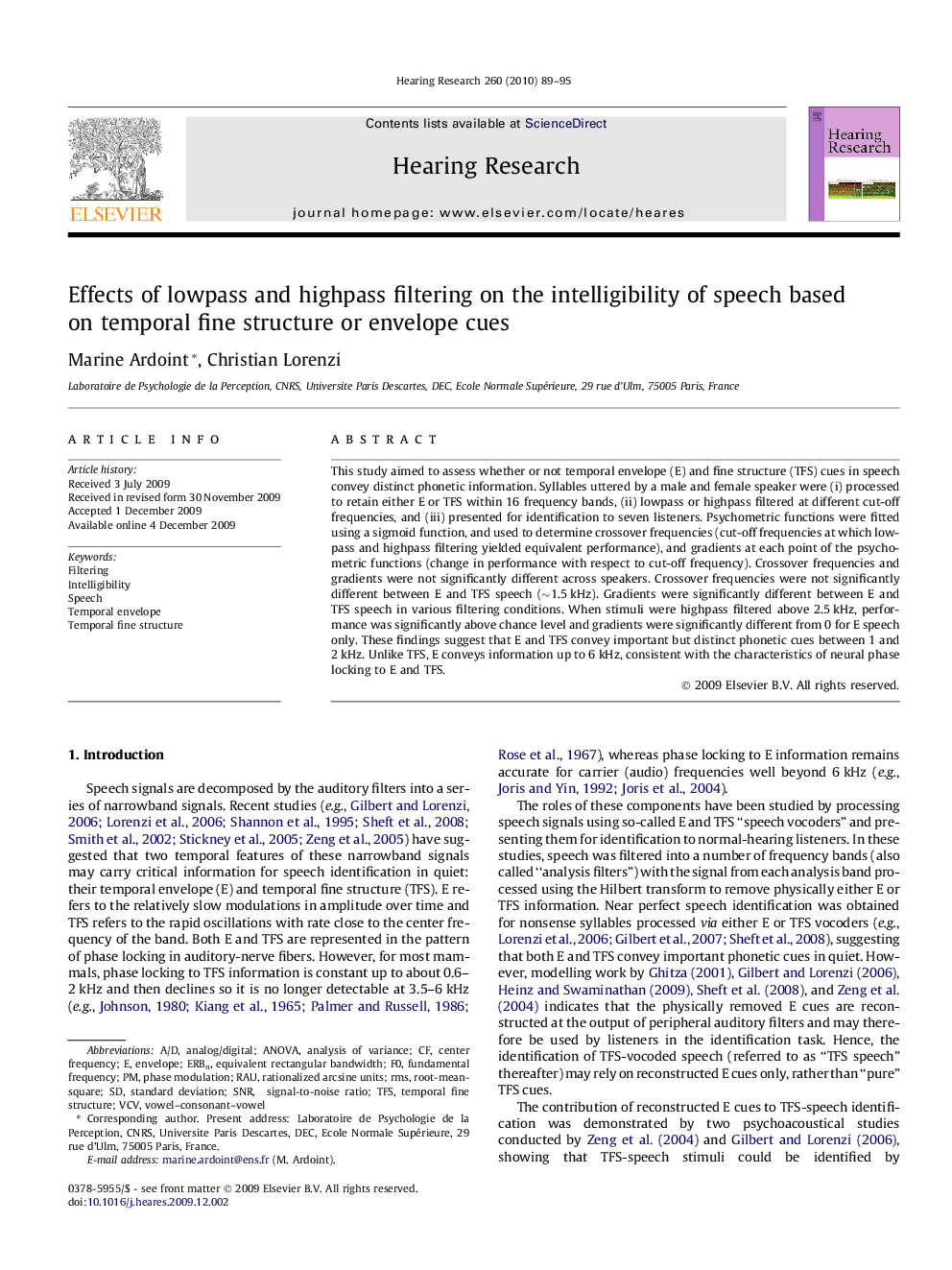| Article ID | Journal | Published Year | Pages | File Type |
|---|---|---|---|---|
| 4355699 | Hearing Research | 2010 | 7 Pages |
This study aimed to assess whether or not temporal envelope (E) and fine structure (TFS) cues in speech convey distinct phonetic information. Syllables uttered by a male and female speaker were (i) processed to retain either E or TFS within 16 frequency bands, (ii) lowpass or highpass filtered at different cut-off frequencies, and (iii) presented for identification to seven listeners. Psychometric functions were fitted using a sigmoid function, and used to determine crossover frequencies (cut-off frequencies at which lowpass and highpass filtering yielded equivalent performance), and gradients at each point of the psychometric functions (change in performance with respect to cut-off frequency). Crossover frequencies and gradients were not significantly different across speakers. Crossover frequencies were not significantly different between E and TFS speech (∼1.5 kHz). Gradients were significantly different between E and TFS speech in various filtering conditions. When stimuli were highpass filtered above 2.5 kHz, performance was significantly above chance level and gradients were significantly different from 0 for E speech only. These findings suggest that E and TFS convey important but distinct phonetic cues between 1 and 2 kHz. Unlike TFS, E conveys information up to 6 kHz, consistent with the characteristics of neural phase locking to E and TFS.
